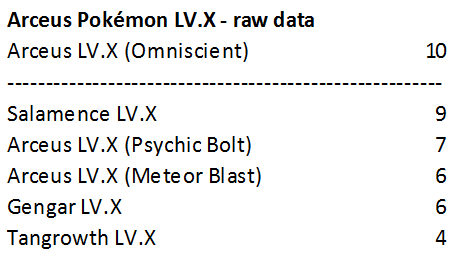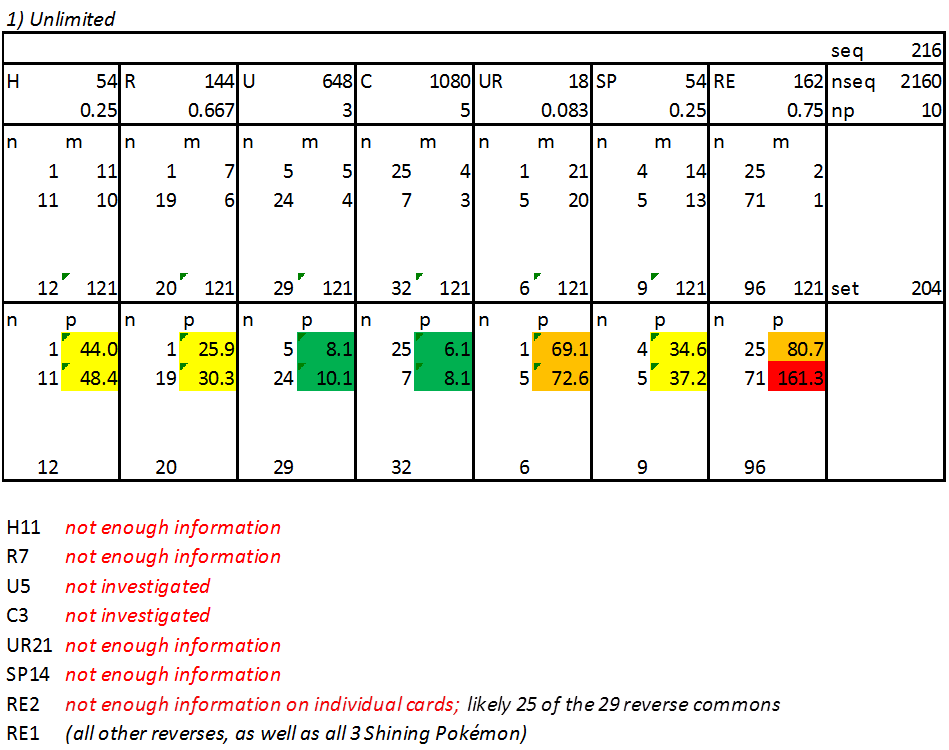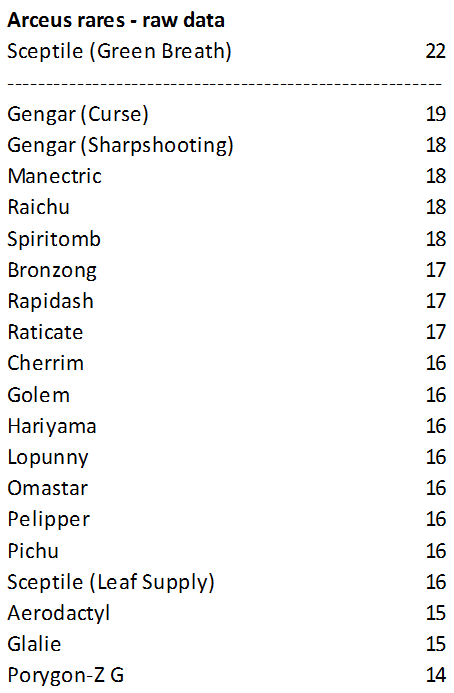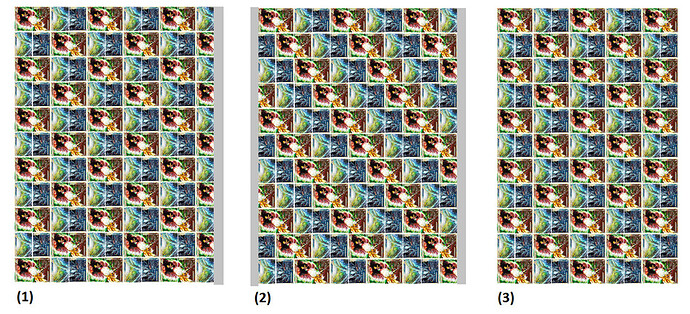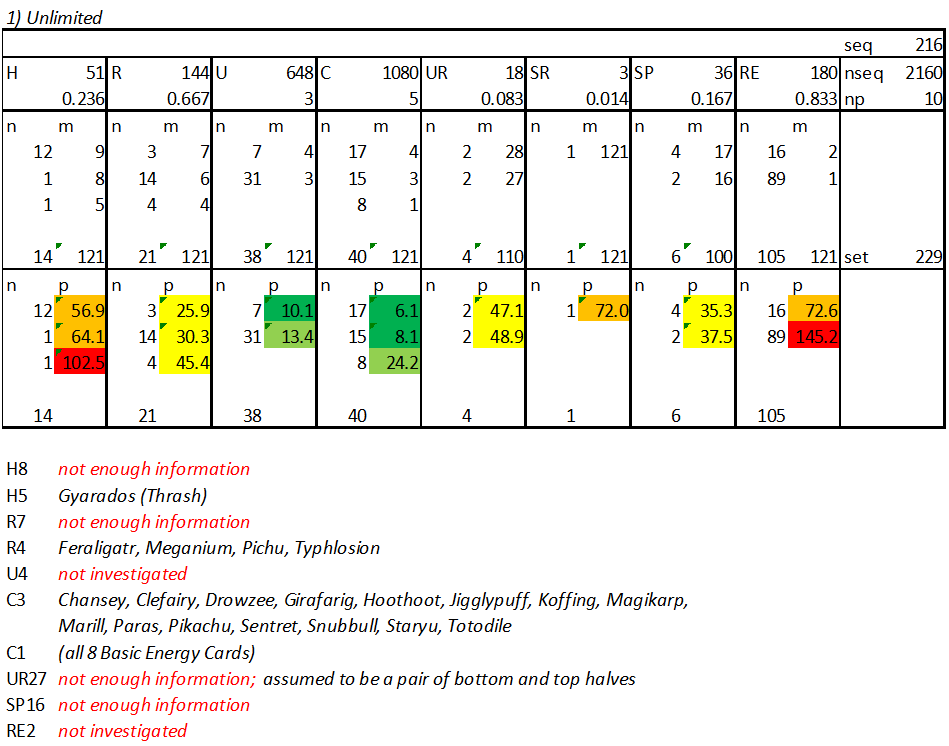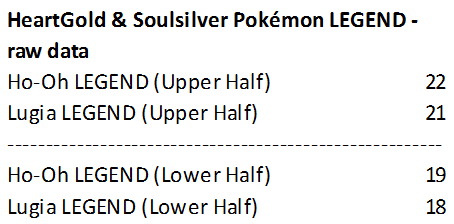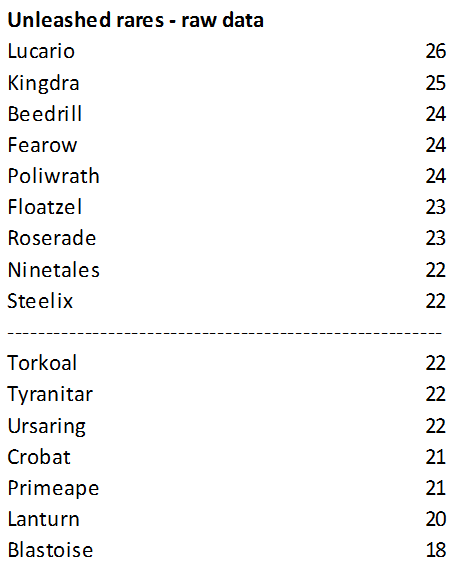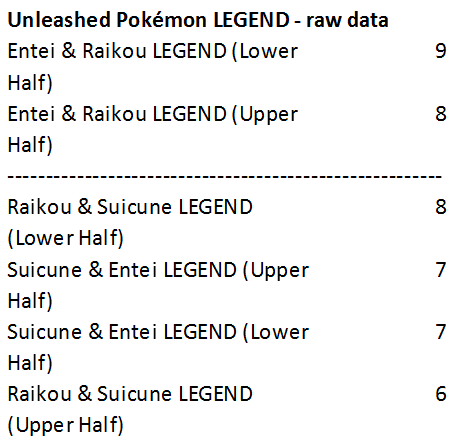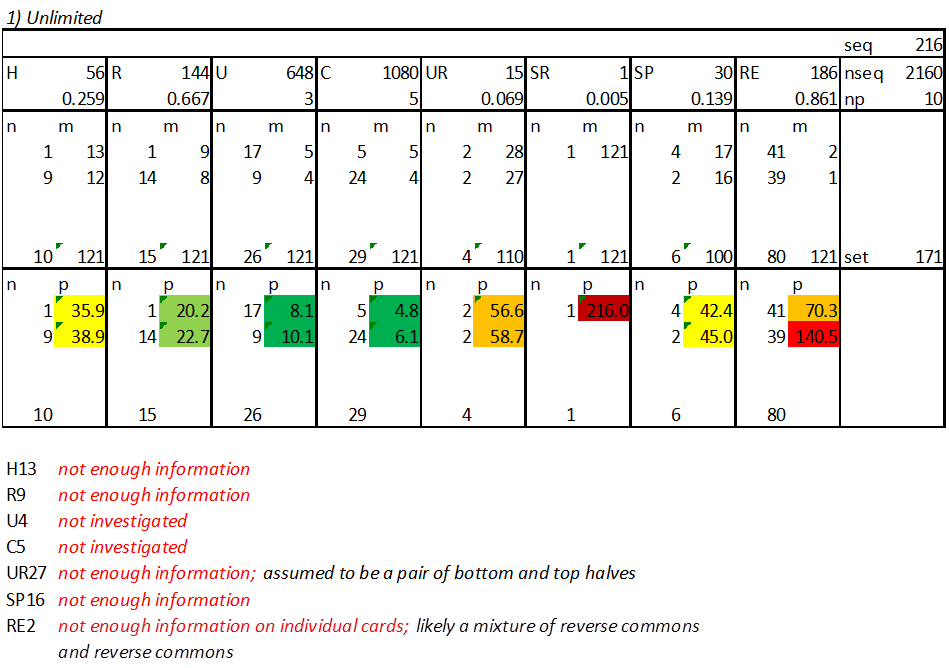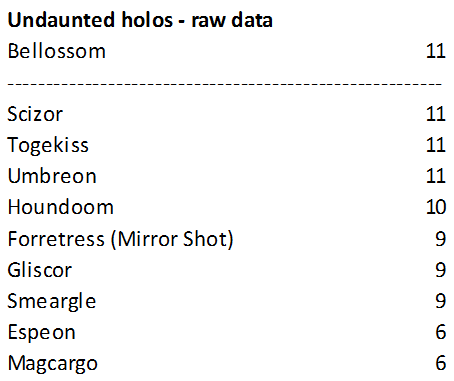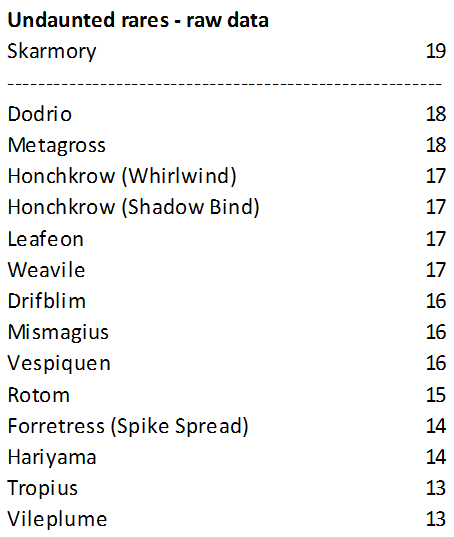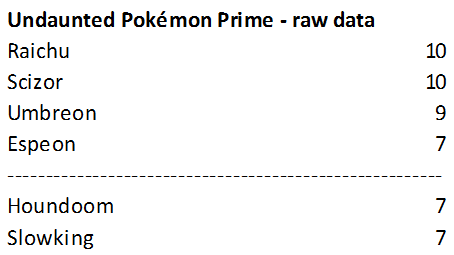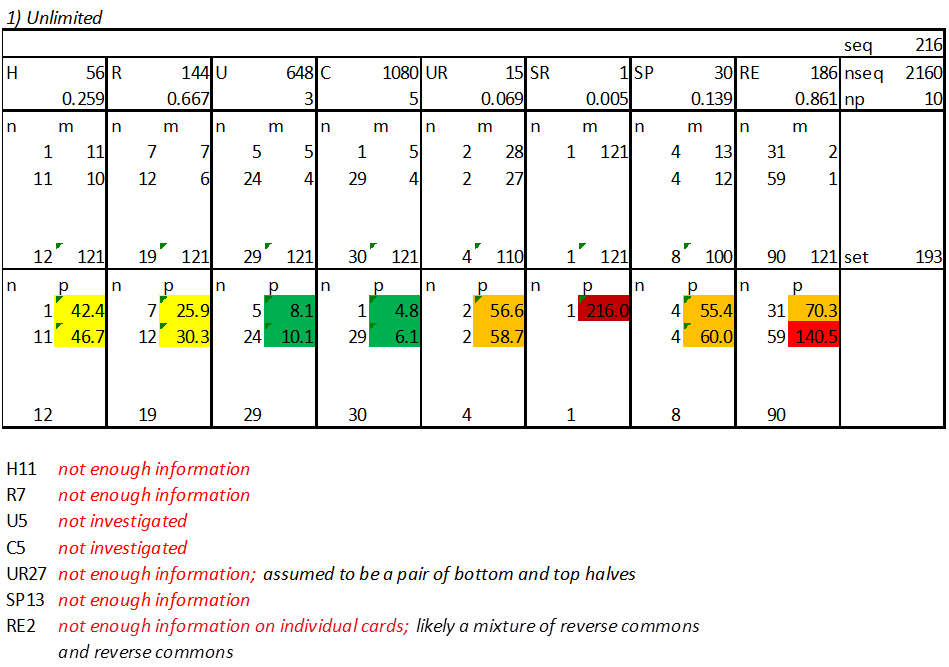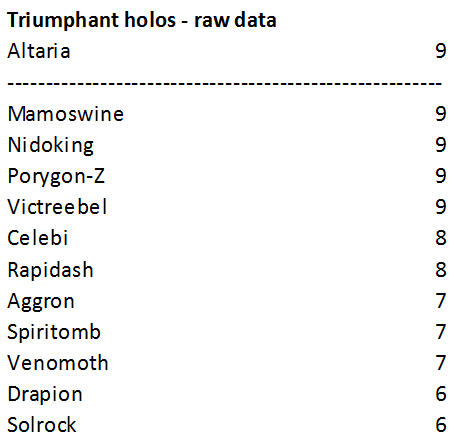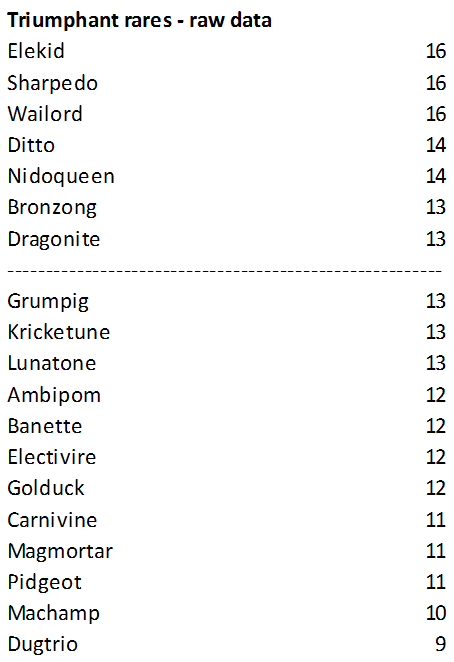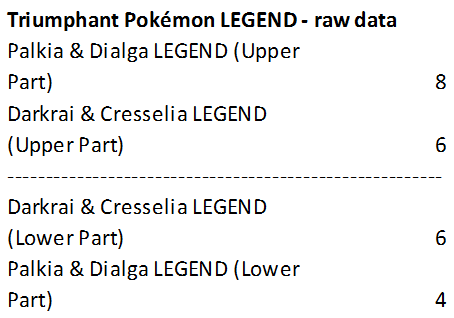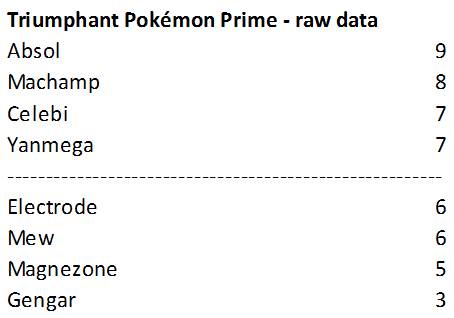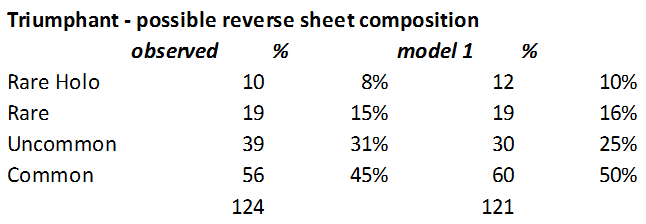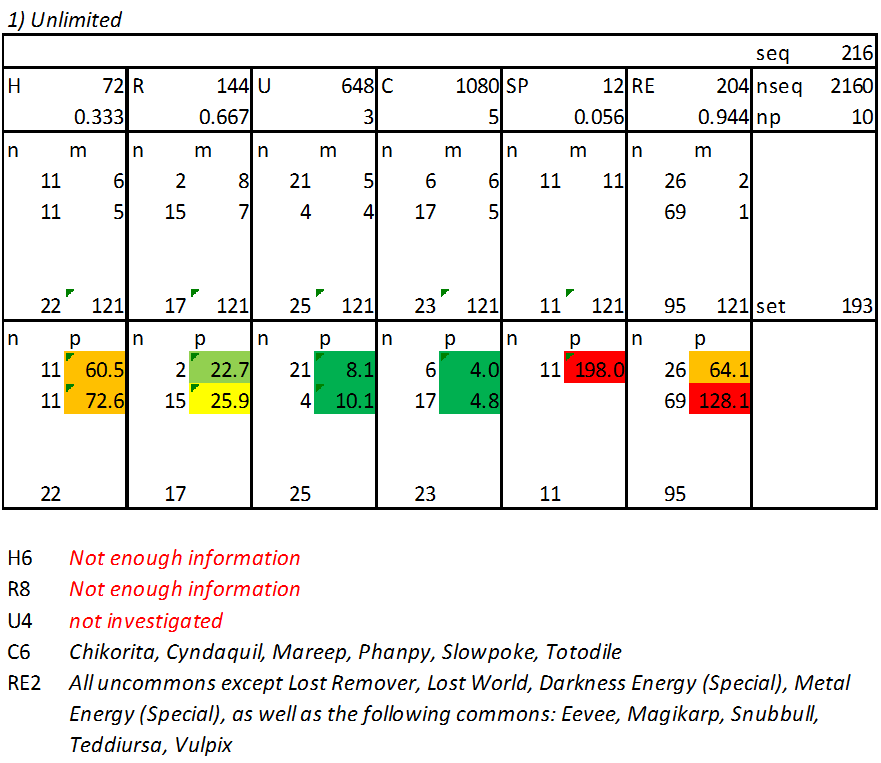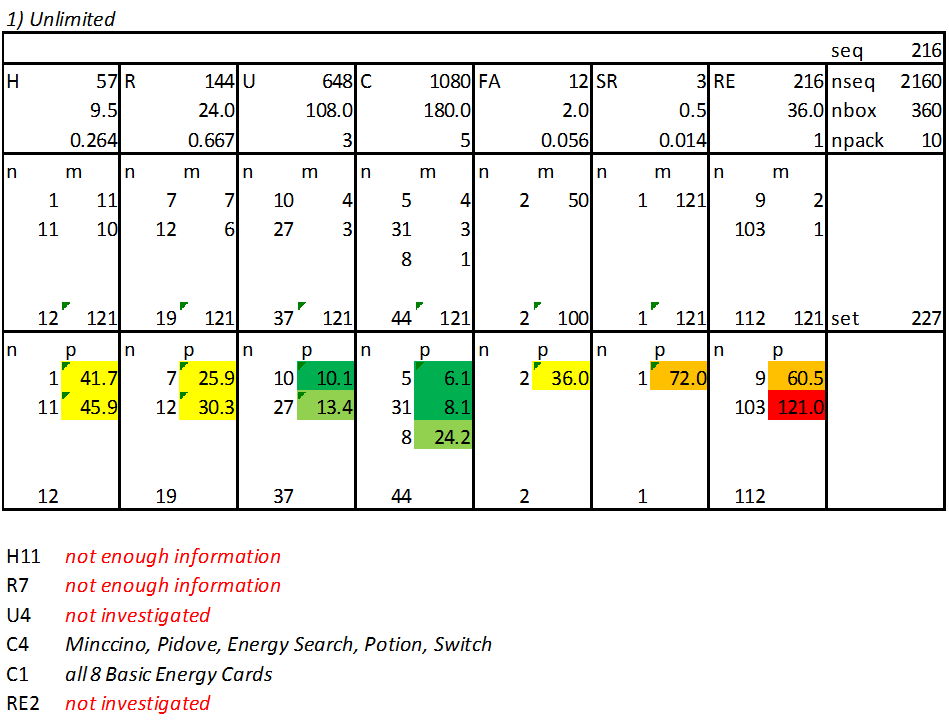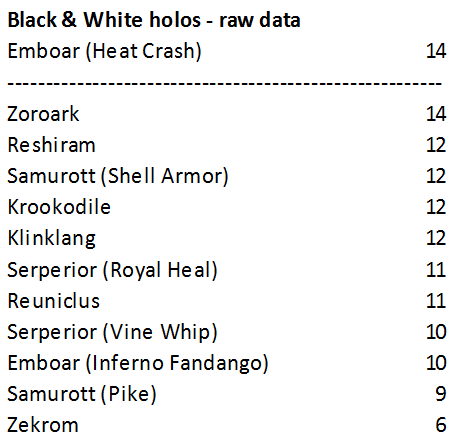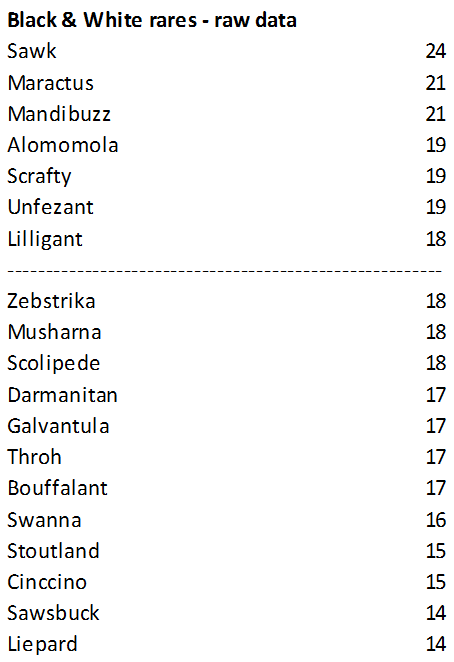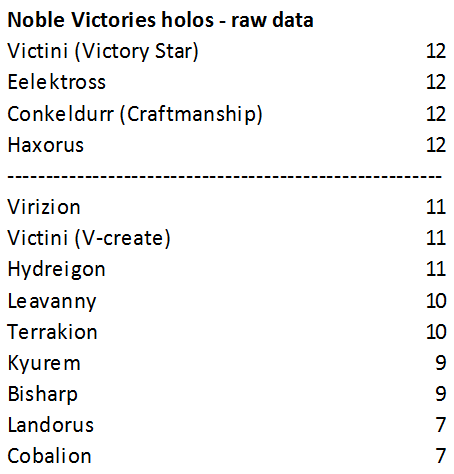Call of Legends
For this final vintage era set (as defined by me, at least), I looked into things a bit more deeply. For one, I reconstructed the commons sheet; for the other, I basically reconstructed the reverses sheet and mapped the box as well. (I say “basically” because a small segment of the sheet I only saw in one box, and I didn’t catch the overlap at the end, but I am quite confident I got it right.)
But first, a few notes about the set. It contains commons, uncommons, rares and rare holos (one in every 3rd pack) but no ultra-rares of any sort in the rare slot. It does, however, include a subset of 11 “Shiny Legendaries” in the reverse slot; since they have a different holofoil pattern than the reverses, they were obviously printed on a separate sheet. They are very consistently two per box. Finally, the set includes the eight Basic Energy Cards, however only as reverses. They were printed on the reverse sheet. Here is the rarity table:
As can be seen, the Shiny Legendaries (labelled SP for “special”) are pretty rare, rarer than any Pokémon LV.X, though not as rare as the Gold Stars in general or most of the Alph Lithograph cards. I am assuming all 11 were printed 11 times on a 121 card sheet.
As to the reverses, 21 of the 25 reverse uncommons and 5 reverse commons were printed twice on the sheet, all other cards (including the Basic Energy Cards) once.
The raw data for the holos and rares looks as follows (dashed lines indicating where the transition from H6 to H5, etc., would occur):
I don’t see any clear patterns.
The commons sheet looks as follows:
† Cyndaquil, Misdreavus, Slowpoke, Pidgey, Totodile, Mareep, Relicanth, Snubbull, Chikorita, Teddiursa, Clefairy, Magmar, Phanpy, Vulpix, Magikarp, Cyndaquil, Eevee, Houndour, Mawile, Koffing, Totodile, Hitmonchan, Hitmonlee, Pineco, Tangela, Mareep, Slowpoke, Snubbull, Eevee, Relicanth, Misdreavus, Phanpy, Pidgey, Magikarp, Hitmonchan, Koffing, Chikorita, Cyndaquil, Hitmonlee, Houndour, Totodile, Pineco, Clefairy, Mawile, Tangela, Magmar, Vulpix, Mareep, Teddiursa, Slowpoke, Chikorita, Pidgey, Relicanth, Hitmonchan, Snubbull, Phanpy, Misdreavus, Cyndaquil, Mawile, Eevee, Magikarp, Houndour, Slowpoke, Magmar, Koffing, Totodile, Vulpix, Tangela, Clefairy, Teddiursa, Pineco, Hitmonlee, Mareep, Chikorita, Phanpy, Relicanth, Cyndaquil, Pidgey, Snubbull, Slowpoke, Misdreavus, Hitmonchan, Houndour, Totodile, Magmar, Chikorita, Vulpix, Pineco, Clefairy, Magikarp, Koffing, Mareep, Tangela, Eevee, Teddiursa, Mawile, Hitmonlee, Phanpy, Cyndaquil, Relicanth, Totodile, Magmar, Houndour, Misdreavus, Vulpix, Hitmonchan, Slowpoke, Magikarp, Clefairy, Pidgey, Mareep, Snubbull, Teddiursa, Phanpy, Eevee, Hitmonlee, Tangela, Mawile, Chikorita, Koffing, Pineco †
The reverse sheet, with a pretty high degree of certainty looks like this:
† Mareep, Smeargle, Koffing, Vaporeon, Sage’s Training, Hitmontop, Tangela, Grass Energy, Ninetales, Cheerleader’s Cheer, Mawile, Cleffa, Hitmonchan, Lost World, Tyrogue, Lugia, Croconaw, Meganium, Lightning Energy, Houndoom, Chikorita, Magmar, Snubbull, Bayleef, Pidgey, Quilava, Snorlax, Pachirisu, Fighting Energy, Riolu, Magby, Research Record, Slowpoke, Vaporeon, Umbreon, Skarmory, Clefairy, Dialga, Mime Jr., Donphan, Darkness Energy (Basic), Typhlosion, Espeon, Teddiursa, Fire Energy, Zangoose, Flaaffy, Kyogre, Seviper, Professor Elm’s Training Method, Psychic Energy, Copycat, Granbull, Jolteon, Houndour, Deoxys, Professor Oak’s New Theory, Slowking, Hitmonlee, Vulpix, Lost Remover, Totodile, Leafeon, Metal Energy (Special), Phanpy, Pidgeotto, Darkness Energy (Special), Snubbull, Eevee, Interviewer’s Questions, Rayquaza, Flareon, Quilava, Ho-oh, Water Energy, Dual Ball, Cyndaquil, Magmortar, Bayleef, Magikarp, Weezing, Sage’s Training, Feraligatr, Metal Energy (Basic), Mime Jr., Cheerleader’s Cheer, Mismagius, Teddiursa, Seviper, Research Record, Lucario, Copycat, Donphan, Forretress, Misdreavus, Palkia, Interviewer’s Questions, Croconaw, Tangrowth, Gyarados, Flaaffy, Professor Elm’s Training Method, Mr. Mime, Ursaring, Riolu, Jolteon, Pineco, Dual Ball, Clefable, Professor Oak’s New Theory, Eevee, Ampharos, Vulpix, Magby, Jirachi, Magikarp, Groudon, Pidgeotto, Relicanth, Pidgeot, Flareon †
I say "with a pretty high degree of certainty, because I actually didn’t observe the overlap of both ends (Mareep and Flareon).
An interesting observation about “mapping” the boxes: While Great Encounters, the other set I mapped, showed a specific pattern for the placement of the holos which wasn’t just every third pack in the sequence, for Call of Legends it simply is every third pack in the sequence. Each of the two stacks of packs seem to get “cut” exactly once before being inserted into the left and right sides of a booster box. The Shiny Legendaries are always either 15 or 21 packs appart from each other in the sequence, and they are always located in packs containing a non-holo rare.
This concludes the first part of this guide. I plan to continue with the Black & White Series, generally keeping the same method but forgoing for most part the analysis of the reverses.


